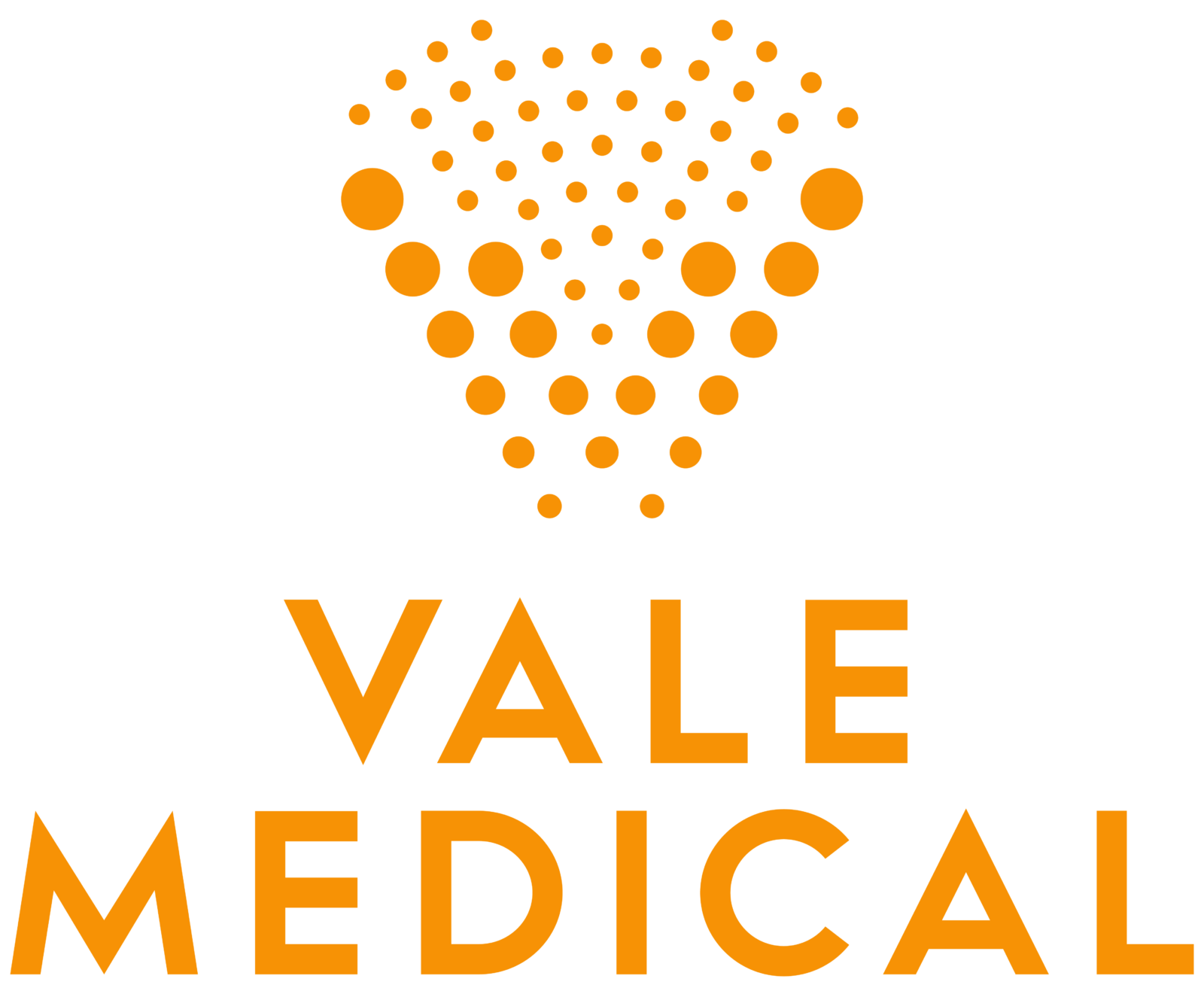In noninvasive regenerative medicine, a powerful treatment trio is emerging: radial shockwave therapy, focused shockwave therapy, and Extracorporeal Magnetotransduction Therapy (EMTT). Clinicians are finding that combining these modalities, pioneered by Storz Medical, can significantly boost clinical outcomes for musculoskeletal disorders, osteoarthritis, chronic pain, and joint dysfunctions.
This comprehensive summary explores how radial and focused shockwaves complement each other, how EMTT adds a new dimension of healing, and what evidence-based benefits this combination offers for patients and private practice clinics alike.
Radial vs. Focused Shockwave Therapy: Complementary Roles
Shockwave therapy (ESWT) comes in two primary forms: radial shockwave (sometimes called radial pressure wave) and focused shockwave. Each has distinct characteristics and therapeutic targets, and using them together can cover a broader range of conditions.
Focused shockwave therapy concentrates energy at specific depths (penetrating up to ~12 cm) with high energy flux, making them ideal for deep or localized targets like insertional tendinopathies, bone lesions, or intra-articular pathology (e.g., hip or spinal facet joints).
Radial shockwaves disperse energy outward from the applicator, reaching more superficial depths (about 3–5 cm) at lower energy. They are well-suited for broad, diffuse issues like myofascial trigger points, large muscle areas, and superficial tendon disorders (e.g., lateral elbow tendinopathy or plantar fasciitis).
In essence, focused ESWT has a substantial, deep regenerative impact, while radial ESWT induces proinflammatory and circulatory effects over a wider area. Table 1 highlights some key differences and complementary aspects of the two shockwave types:
| Aspect | Focused ESWT (Focal
Shockwave) |
Radial ESWT (Radial Shockwave) |
| Penetration Depth | Up to ~12 cm into tissue (deep targets) | ~3–5 cm (surface-level to superficial tissue) |
| Energy & Effect | High energy density; focused regenerative effect on cells and tissue matrix | Lower energy, mechanical pressure wave stimulating tissue matrix and blood flow |
| Precision of Target | Very high (energy converges at a point in tissue) | Broad dispersal (wide impact area from the skin surface) |
| Patient Sensation | Moderate intensity, generally well-tolerated (pain low–mid) | More intense at the skin surface (pain mid–high) |
| Typical Sessions | 2–4 sessions for chronic injuries (higher energy per session) | 4–6 sessions for chronic injuries (lower energy per session) |
| Ideal Use Cases | Deep or focal lesions: e.g., insertional tendinitis, stress fractures/non-unions, degenerative conditions (osteoarthritis), spine facet pain | Broad or superficial issues: e.g., muscle trigger points, large tendon areas, plantar fasciitis, epicondylitis |
Table 1: Comparison of Focused vs. Radial Shockwave Therapy. Each modality covers different depths and tissue targets, making them complementary rather than redundant in musculoskeletal treatment. In practice, many clinics first apply radial shockwave to stimulate blood flow and relieve muscle tightness in a general area, then use focused shockwave to pinpoint deeper pathology in the same session. This one-two punch can accelerate pain relief and healing. In fact, emerging evidence suggests that using combined radial+focused shockwaves yields better functional gains in certain cases than radial shockwaves alone. For example, a 2022 clinical study on chronic Achilles tendinopathy found that 89.7% of patients treated with combined focused+radial shockwave achieved clinically important functional improvement, compared to 63.8% with radial alone. Both groups improved, but the combined therapy group had a higher proportion of significant responders, indicating more reliable outcomes. This illustrates how pairing focused and radial ESWT can enhance effectiveness, likely by addressing both the deep degenerative tendon fibers and the superficial muscle/aponeurosis issues that often coexist in chronic injuries.
Introducing EMTT: A New Dimension in Regenerative Therapy
Extracorporeal Magnetotransduction Therapy (EMTT) is the latest non-invasive modality joining forces with shockwave therapy. Developed by Storz Medical (device name MAGNETOLITH), EMTT delivers high-energy pulsed electromagnetic fields to injured tissues. Unlike traditional pulsed electromagnetic field (PEMF) therapy, EMTT operates at a very high oscillating frequency (100–300 kHz), which distinguishes it from other magnetic therapies.
The therapy involves placing a loop applicator near the target area (without touching the skin) to induce electromagnetic pulses that penetrate deep into the body. Each EMTT session is quick (often 5–20 minutes) and painless, as patients feel only a mild tapping or warmth while the magnetic field stimulates the tissue.
Crucially, EMTT is evidence-based, FDA/CE-approved, and has earned the moniker “regenerative medicine’s rising star” due to its broad applications in musculoskeletal care. It has been shown to be an exceptional complement to shockwave (EPAT/ESWT), though it can also be used as a stand-alone therapy. The range of indications for EMTT overlaps significantly with common shockwave indications, which is why combining them makes sense.
EMTT is used for “wear-and-tear” injuries and chronic conditions, including osteoarthritis of the knee, hip, hand, shoulder, and elbow, chronic back pain, degenerative arthritis, tendon inflammation, and general joint pain. There are many conditions in which radial/focused shockwaves are effective. Mechanistically, EMTT’s pulsed magnetic energy triggers biological effects at the cellular level: it induces electromotive forces that can modulate cell membrane potentials, improve microcirculation, and upregulate the body’s natural repair processes. Patients often experience an analgesic effect during and after EMTT, and the therapy appears to promote tissue regeneration in degenerative joints.
Notably, laboratory research indicates EMTT’s high-frequency pulses can stimulate healing in musculoskeletal tissues without harming sensitive cells like mesenchymal stem cells, which are vital for tissue repair.
This makes EMTT especially attractive for orthopedic use; it can potentially foster cartilage, bone, and soft tissue healing in ways that complement the mechanical stimulation from shockwaves.
In summary, EMTT adds a new dimension of regenerative stimulus, where shockwaves create microtrauma and mechanical stress to induce healing. EMTT bathes the area in electromagnetic energy that boosts cellular metabolism and anti-inflammatory pathways. Given these distinct yet synergistic actions, combining shockwave therapy with EMTT is a logical next step to maximize non-invasive treatment outcomes.
Synergistic Clinical Benefits of Combining Shockwaves and EMTT
Combining radial and/or focused shockwave therapy with EMTT offers a powerful multimodal approach for a wide range of musculoskeletal (MSK) and pain conditions. By attacking the problem from multiple angles, mechanical acoustic pulses plus electromagnetic pulses, clinicians can achieve pain relief and functional improvements often faster or greater than with either modality alone.
Below, we explore several key conditions and how the shockwave+EMTT “dynamic duo” is making a difference, supported by up-to-date clinical evidence and examples.
Tendinopathies and Soft Tissue Injuries
Chronic tendinopathies (such as rotator cuff tendinitis, Achilles tendinopathy, and lateral epicondylitis) respond well to shockwave therapy, and early evidence shows even better results when EMTT is added.
A landmark randomized controlled trial in 2018 investigated rotator cuff (RC) tendinopathy in 86 patients, comparing standard shockwave treatment versus shockwave combined with EMTT. Both groups received 3 weekly focused ESWT sessions, while the combined group also received 8 EMTT sessions.
The results were clear: both pain and shoulder function improved significantly more in the combined ESWT+EMTT group. By 24-week follow-up, patients who got the combo reported greater pain reduction on the visual analog scale (VAS) and higher Constant-Murley shoulder scores than those who got shockwave with sham EMTT.
In fact, the trial concluded that adding electromagnetic transduction therapy to shockwave “significantly improves pain and function” in rotator cuff tendinopathy vs. shockwave alone. This high-level evidence underlines the synergy of the two modalities: the shockwave likely stimulates tendon regeneration and neovascularization, while EMTT further boosts cellular repair in the tendon and surrounding tissue, yielding superior outcomes.
Other soft-tissue injuries show similar promise. In Achilles tendinopathy, as noted earlier, combining radial and focused shockwaves already improved the consistency of functional gains. It stands to reason that layering EMTT on top could amplify healing even more, especially for recalcitrant cases.
Although formal studies on Achilles + EMTT are still forthcoming, a preliminary report suggests EMTT alone can aid Achilles tendon healing, and many clinicians are beginning to integrate all three: radial for broad myofascial release, focused for the tendon lesion, and EMTT for deep cellular activation.
Anecdotally, difficult tendon injuries (chronic plantar fasciitis, patellar tendinopathy, hamstring origin tendinopathy, etc.) that plateau with shockwave alone may respond to the addition of EMTT; patients report quicker pain relief and a return to activity. The combined approach attacks the pathology (tendinosis, chronic inflammation) while also addressing secondary muscle tightness or edema, giving a more holistic treatment.
Osteoarthritis, Cartilage, and Joint Disorders
Degenerative joint conditions like osteoarthritis (OA) are a major focus for this combined therapy approach. Osteoarthritis in weight-bearing joints (knees, hips) and even smaller joints (shoulder, hands) is traditionally difficult to treat conservatively, but shockwave therapy has emerged as an effective option to reduce pain and improve function in OA patients.
Focused shockwaves, in particular, have shown the ability to stimulate cartilage regeneration and subchondral bone remodeling in arthritic joints. In one randomized study, focused ESWT was found to be more effective than radial ESWT for knee OA in improving pain and physical function, likely due to the deeper penetration needed in the knee joint. Building on this, adding EMTT offers even greater potential for joint healing.
The magnetic field can penetrate the entire joint space and surrounding tissues uniformly, something even focused shockwaves (which treat spot by spot) might not fully accomplish.
Early clinical experience supports the combo’s benefits in OA and joint healing. An illustrative case report by orthopedic surgeon Dr. Karsten Knobloch documented an 84-year-old patient with a medial meniscal tear and knee osteoarthritis who was awaiting knee replacement. The patient underwent a combination of Storz focused shockwave therapy and Magnetolith EMTT.
Over several sessions, the meniscal tear showed healing on ultrasound and MRI, pain dramatically reduced, and the patient’s knee function improved, delaying or potentially avoiding the need for surgery. This case, published in 2022, highlighted the “synergistic potential of EMTT and focused shockwave therapy” for regenerating degenerative knee tissue.
The pulsed electromagnetic therapy likely helped drive regenerative currents through the entire meniscus and cartilage, while shockwaves stimulated localized tissue repair, together facilitating structural healing in a chronic tear that typically would not heal on its own. Beyond meniscus injuries, clinical practitioners are seeing benefits in knee and hip osteoarthritis with the full combo therapy.
Shockwaves help by reducing inflammation, improving blood supply, and triggering new cartilage matrix production, whereas EMTT provides an analgesic effect and energizes the cells in the joint to enhance those regenerative processes.
Patients with knee OA often report reduced pain and stiffness after a few combined treatments, sometimes achieving functional gains (walking distance, stair climbing) beyond what either modality would produce alone. Importantly, these therapies offer a non-invasive alternative to injections or surgery for arthritis. Cortisone injections, for instance, carry risks of accelerating joint degeneration and other adverse effects.
In contrast, radial/focused ESWT and EMTT involve no drugs or incisions, and thus no risk of infection or post-injection flare. They can be repeated safely and actually promote long-term healing rather than just masking pain.
As a result, more clinics are adopting shockwave+EMTT for patients with osteoarthritic joints who want to avoid or delay joint replacement. While not a panacea, the combined approach often improves joint function and pain enough to significantly improve quality of life, and may even stimulate tissue repair that changes the course of the disease.
Spine Pain and Other Musculoskeletal Conditions
Chronic back pain and neck pain are additional arenas where shockwave and EMTT together show promise. Focused shockwave therapy is already used for certain spinal issues (for example, facet joint arthropathy or enthesopathy, and trigger points in paraspinal muscles).
Meanwhile, EMTT’s broad field effect is ideal for conditions like non-specific low back pain (LBP), which often involve diffuse soft tissue pain and spinal degenerative changes. In a 2017 RCT, Gerdesmeyer et al. found that pulsed electromagnetic therapy (EMTT) significantly reduced pain and improved function in patients with chronic non-specific low back pain compared to placebo.
This suggests that even without shockwave, EMTT can benefit back pain sufferers, likely by reducing inflammation of lumbar facets or sacroiliac joints and relaxing hypertonic muscles via neuromodulation.
Combining EMTT with shockwave for back pain can tackle multiple pain generators: the shockwaves can be directed at myofascial trigger points or specific tender spots (e.g., SI joint ligaments or paraspinals), while the EMTT coil simultaneously treats the entire lower back region, promoting disc and joint health.
Although formal studies on the combined approach in spine pain are still limited, pain clinics report that patients with stubborn low back or neck pain often experience faster and greater relief when both therapies are applied together, versus either one alone. The non-invasive nature means these treatments can be offered even in older patients or those with surgical contraindications, filling an important gap in conservative care for spine disorders.
Additionally, other chronic MSK conditions, from tendinopathies of the elbow and wrist to muscle trigger points in fibromyalgia, may similarly benefit from the multi-modal stimulus of shockwaves plus EMTT. In essence, if a condition involves pain and impaired tissue healing, this combo can likely help by simultaneously improving the biomechanical environment (via shockwave) and the bio-cellular environment (via EMTT).
Practical Business Case for Private Practices
Beyond the clinical advantages, combining radial/focused ESWT with EMTT can be a game-changer for clinics and private practice owners from a business perspective. Offering these advanced, evidence-backed therapies differentiates a practice and opens new revenue streams.
Many patients today actively seek out regenerative treatment options by name, whether it’s “shockwave for my tennis elbow” or “that magnetic therapy for arthritis”, and being the go-to provider in your area gives you a competitive edge. High patient satisfaction (often over 80% with shockwave treatments) drives word-of-mouth referrals and repeat business.
In fact, investing in these technologies can foster practice growth as new patients who might otherwise consider surgery or live with chronic pain are drawn to your clinic for non-invasive solutions.
From an efficiency and workflow standpoint, integrating Shockwave and EMTT can streamline care delivery. A combined therapy session is typically brief, for example, 10 minutes of shockwave therapy followed by 10 minutes of EMTT (which can even be applied while the clinician attends to documentation or another patient due to its hands-on nature once set up).
Clinics report that adding these modalities has “optimized staff performance” and reduced overall patient visits by accelerating recovery. Instead of lengthy treatment courses or multiple referral appointments, patients often get better in just a handful of combo sessions, freeing up the schedule for new patients.
Additionally, providing comprehensive care under one roof (rehab exercises, shockwave, EMTT, etc.) reduces the need to refer patients out, which not only keeps revenue in-house but also improves patient satisfaction by simplifying their care journey.
Let’s talk pricing and ROI. While pricing varies by region and practice, clinics commonly charge a premium for focused shockwave and EMTT due to the enhanced effectiveness and higher device costs. For instance, a practice might charge around $150 for a standard radial shockwave therapy session, about $250 for an advanced session that includes both radial and focused shockwave, and roughly $350 for a full combination session that adds EMTT on top.
Patients are often willing to pay more for the added value: the focused shockwave reaches issues that radial alone cannot, and EMTT further boosts the treatment impact; in the patient’s eyes, the extra cost is justified by faster or greater relief.
Moreover, because none of these modalities require anesthesia or significant clinical time, the profit margin per session can be quite favorable once the capital investment in equipment is recouped. Clinician workload does increase modestly with offering multiple therapies, but not dramatically.
A therapist can typically administer radial/focused shockwave in a few minutes (especially with modern devices that are ergonomic and have guided protocols), and EMTT, once initiated, does not require one-to-one manual effort. In practice, the time per patient session might increase by only 5–15 minutes when adding focused ESWT and EMTT, yet the revenue per session increases substantially (as in the example above). This means a better return on time for the provider.
Some clinics even run EMTT on one patient while setting up another patient on shockwave, staggering treatments to maximize throughput (observing safety and attention, of course). In summary, the business case for shockwave + EMTT is strong: improved patient outcomes lead to happy patients and a distinct service offering, which in turn leads to practice growth and financial returns.
By enhancing treatment efficiency and results, these technologies allow clinicians to elevate their standard of care and legitimately command premium pricing, a win-win for patients and providers.
Advancing MSK Care with Vale Medical
At Vale Medical, we’re committed to equipping healthcare professionals with the most advanced solutions in non-invasive musculoskeletal therapy. The combination of radial and focused shockwave therapy with EMTT offers a powerful, evidence-based approach to treating conditions such as tendinopathies, chronic pain, and osteoarthritis.
This triple-modality protocol drives faster recovery, improved mobility, and reduced need for invasive procedures, all while helping clinics stand out with a high-impact service that boosts both patient satisfaction and practice performance. With ongoing research exploring new applications from chronic back pain to tissue regeneration, this integrative approach is quickly becoming a new standard in regenerative MSK care.
Vale Medical proudly supports forward-thinking clinics in implementing these technologies through cutting-edge devices, clinical training, and responsive support. By embracing this next-generation therapy model, your clinic can stay at the forefront of innovation and deliver superior care in the evolving world of musculoskeletal medicine.
Sources:
- Storz Medical, Shockwave and EMTT in Orthopaedics
- Remington Medical, Radial vs. Focused Shockwave Guide
- Robinson DM, et al. J Foot Ankle Surg. (2022), Combined vs Radial Shockwave for Achilles Tendinopathy
- Remington Medical, Storz Magnetolith EMTT Info (applications of EMTT for MSK conditions)







